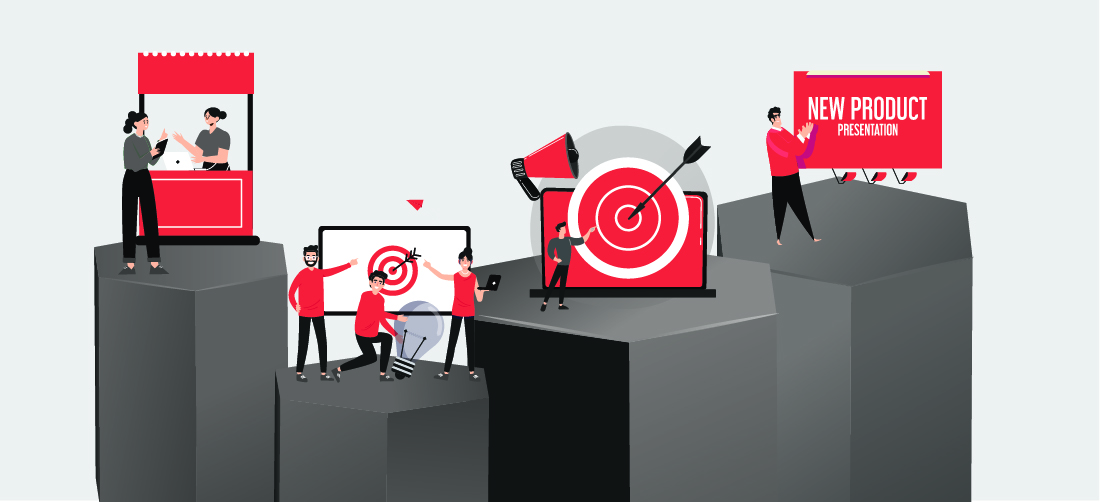Introduction: Why BTL Advertising Still Works
With today's highly digital and cluttered advertising environment, brands are once again finding the value of BTL (Below-the-Line) advertising, a marketing approach that thrives on local, direct, and personal interaction. Whether in the form of a roadshow, mall activation, or in-store promotion, BTL marketing enables brands to talk to consumers on the ground in a relevant manner.
This post discusses what BTL advertising is, how it's different from ATL, and how you can leverage BTL marketing strategies to generate brand engagement, visibility, and sales, particularly within diverse Indian markets.
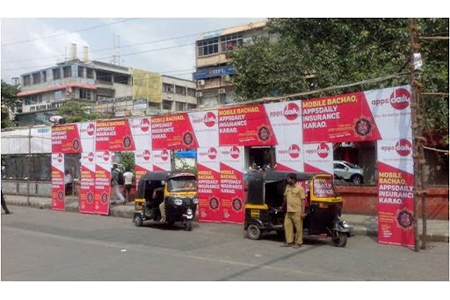
What is BTL Advertising?
BTL (Below-the-Line) marketing is focused marketing that reaches out to targeted people directly via non-mass media platforms. In contrast to mass ATL efforts, BTL is interactive, personal, and hyper-local, and tends to bring more engagement.
Some BTL activities are popular in India, with a short description:
Here are some common BTL activities in India, with brief explanations:
Mall & Retail Activations: Brand stands or kiosks within malls to engage directly with consumers.
Society & RWA Promotions: Activities or campaigns in residential complexes to reach families within a controlled environment.
Roadshows & Canter Branding: Branded vans or canters that take the message to consumers in congested local spots through music, demos, and prizes.
Sampling & Demo Campaigns: Product trials for free at strategic locations like retail stores, events, or public spaces.
On-ground Brand Activations: Creative brand activities—like a game or contest—that generate awareness and interaction.
Event Sponsorships & Exhibitions: Attending local events or trade shows to create visibility and credibility through presence and touch.
BTL vs ATL: What’s the Difference?
| Feature | ATL Advertising | BTL Advertising |
|---|---|---|
| Reach | Mass audience | Targeted, local audience |
| Medium | TV, Radio, Newspapers, Billboards | Events, activations, direct contact |
| Engagement | Passive consumption | High engagement and interactivity |
| Cost | High (media buying) | Cost-efficient and scalable |
| Personalization | Limited | Highly personalized |
BTL promotions are particularly effective for brands wanting measurable interaction, direct feedback, and grassroots-level market penetration.
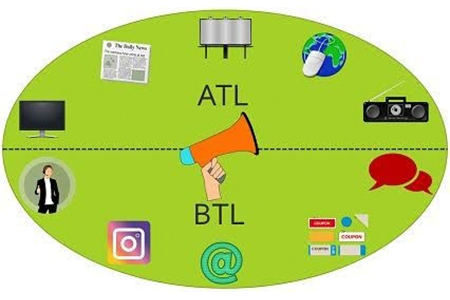
Why BTL Advertising Works in India
India's cultural, linguistic, and geographic diversity makes local marketing more impactful than a single global campaign. That is why BTL works best:
Connect with Local Audiences
BTL allows brands to keep campaigns local at heart, aligning with local festivals, culture, and local languages, immediate connect.
Demonstrate Product Value
Sampling or demonstration at events or store locations enables feel and touch of the product, leading to buying intent.
Create Memorable Engagement
Interactive elements like contests, games, or giveaways are salient and engaging and contribute to recall.
Build Trust Through Face-to-Face Interaction
Personal conversations with promoters build credibility and allow customers to ask questions before buying.
Tier 2 and Tier 3 cities, where digital penetration has yet to increase, see more effective offline activations that amplify word-of-mouth communication.
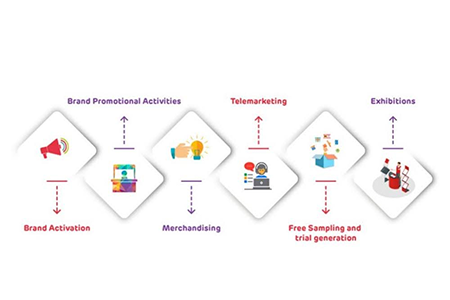
Creative BTL Activation Ideas (Explained)
1. Interactive Product Demos
These installations are embedded directly into the ground and are often found in shopping centers, retail stores, or special events. They allow standholders’ customers to directly see, touch, and experience the product in question. Experiential marketing assures and enhances trust, especially for new and unknown brands. Customers can ask questions, give real-time suggestions, and usually make purchases if the product impresses them.
Appropriate for: Cosmetics, electronic gadgets, FMCG, and health and wellness products.
2. Canter Roadshows
This is achieved by deploying branded mini trucks (Canter) operating as mobile shops. These serve during peak hours in universities, shopping centers, and residential suburbs. The vans may carry music, games, mic announcements, give-aways, and product demonstrations, creating excitement where they go. It's a good method to get your brand right in front of the people, particularly in Tier 2 and 3 cities.
Ideal for: Mobile apps, food brands, local services, telecom, retail launches
3. Housing Society Campaigns
These are small-sized activations within gated communities or apartments, ideal for reaching families and homemakers. To create casual, low pressure awareness and trust, companies set up kiosks for sampling and other brand activities within housing societies. The small, close-knit communities spread word of mouth very fast.
Ideal for: FMCG, healthcare, financial services, home appliances
4. College Campus Promotions
Colleges serve as the perfect location to reach out to young, social, and trend-aware groups. BTL activities here could range from contests, product sampling, free samples, or entertaining games that stimulate participation and word-of-mouth. It's also an excellent opportunity to seed buzz on social media among student opinion leaders.
Best suited for: Beverages, fashion, tech devices, career counseling, youth-oriented brands
5. Festive & Cultural Tie-ins
Whether it’s the Diwali activation, the Holi fest, Navratri pack shuffling, Durga Puja, or even the local fair or pandal, brands get a chance to connect with large groups of engaged and emotionally charged people. Brands can sponsor tents, host contests, and provide tasting samples or partake in value-driven giveaways while channelling the festive mood—all the while increasing their brand’s recall.
Ideal for: Retail, sweets and snacks, banking, and electronics consumer durables
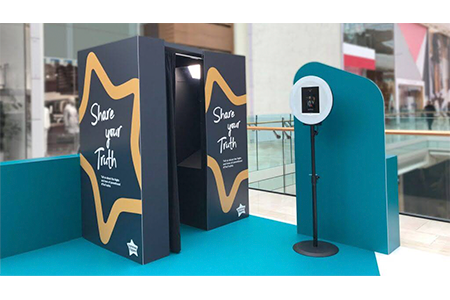
BTL Advertising Examples in India
1. Pepsi’s Taste Challenge Campaign
Pepsi set up sampling booths in public spaces, letting people directly compare its taste with a competitor (Coke). This face-to-face interaction encouraged immediate feedback, created buzz, and drove strong consumer recall.
2. Amazon’s Great Indian Festival Van
Amazon launched a mobile van campaign that toured Indian cities showcasing festival deals and products. It helped the brand reach people in smaller towns, build excitement offline, and drive traffic to the app and website.
3. LIC Housing’s RWA Connect Campaign
LIC targeted housing societies by organizing small events within gated communities, where families could learn about home loans and insurance. These BTL activities built trust through direct engagement in familiar environments.
These examples show how BTL marketing can be customized, scalable, and highly impactful across product categories.
Advantages of BTL Marketing (Explained)
1. High Engagement
BTL campaigns demand direct, face-to-face interaction with the audience, whether through events, product demonstrations, or activations. Such interactions help make a brand intimately familiar, approachable, and trustworthy.
2. Customizable
Due to the need for region-specific adjustments, BTL campaigns are highly effective in countries like India where multiple languages and cultures exist. You could be promoting during a local festival or reaching a targeted age group in a particular city; with BTL, you can modify your message and format to match the audience.
3. Measurable
In contrast to most ATL activities, BTL campaigns provide instant feedback and facts. You can monitor footfall, samples given out, leads registered, or actual conversions, providing your team with transparent visibility into performance and ROI.
4. Cost-Efficient
BTL marketing tends to be cheaper than mass media advertising, particularly when promoting regionally or locally. You can spend smarter by targeting specific communities or areas, and not shelling out money for nationwide reach that you don't require.
5. Sales-Oriented
The majority of BTL campaigns, such as in-store promotions, society-level activations, or roadshows, allow the consumer to have an immediate experience with the product. This typically results in quicker sales, immediate positive word-of-mouth, and faster decision-making as compared with passive media coverage.
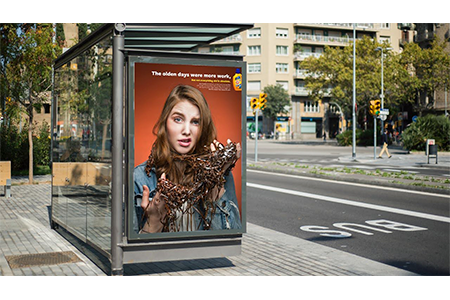
Why Choose Excellent Publicity for BTL Campaigns
At Excellent Publicity, we simplify and make BTL advertising efficient by taking care of everything from conceptualization to implementation. Here's how we assist:
1. Location-Based Campaign Planning
We find the appropriate areas and audience segments, be it a metro city, a Tier 2 town, or a neighborhood, so your campaign reaches the audience that matters the most.
2. Vendor and Resource Coordination
We deal with our reliable local vendors, obtain permissions, and organize materials, so your campaign goes on without any hindrances or delays.
3. Creative Concept Development
We assist in creating compelling and creative campaign concepts, on-ground games to custom sampling formats, so your brand gets noticed.
4. On-Ground Staff and Logistics
We offer trained promoters, canter vans, setup teams, and logistics services, so your campaign is professional in appearance and runs smoothly.
5. Reporting, Lead Capture, and Analysis
Once executed, we deliver detailed reports, pictures, and lead information (if available), which enables you to measure the effect and ROI of the campaign.
We assist you in bringing ideas into effective, real-world experiences that deliver quantifiable outcomes.
Conclusion: Go Beyond the Line to Win Trust
Hype around BTL campaigns in India doesn’t feel like it’s dying down anytime soon, and there’s a good reason for that. With the focus on face to face interactions, BTL advertising connects brands with their audience, from colleges and malls to residential areas and roadshows, which helps a brand to be recalled when it truly matters by cutting through the digital overload.
Building awareness for a new product, growing a market, or increasing regional influence, all of these can greatly benefit from BTL marketing, as it assists right at the location.
Ready to Activate Your Brand Locally?
Let Excellent Publicity craft a BTL campaign that delivers real-world engagement and lasting impact.
Contact us today for creative strategies, activation support, and pan-India execution.


